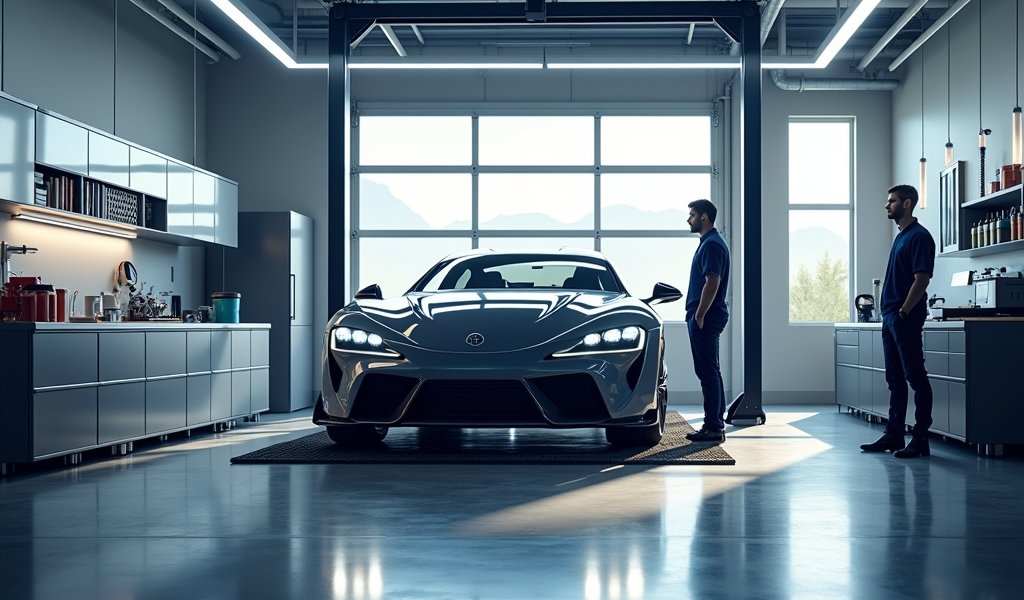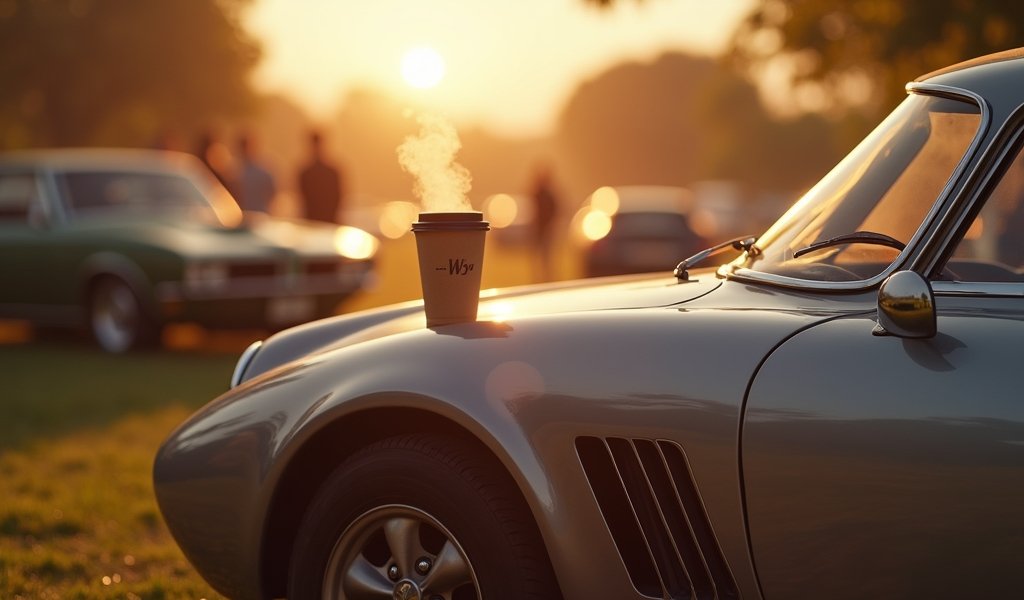Overview
This article provides seven professional tips for maintaining a show-worthy vehicle before, during, and after Cars and Coffee meetups, including thorough cleaning, paint protection, strategic parking, and post-event maintenance. It emphasizes that proper car care not only preserves your vehicle’s condition but also demonstrates respect for the automotive community culture these gatherings celebrate.
Table of Contents
- What Are Cars and Coffee Meetups?
- Pre-Meetup Preparation
- During the Meetup
- Post-Meetup Care
- Conclusion
- Frequently Asked Questions
What Are Cars and Coffee Meetups?
Cars and coffee meetups have transformed weekend mornings for automotive enthusiasts across the country. These informal gatherings bring together passionate car owners showcasing everything from vintage classics to modern supercars, all while enjoying the community atmosphere and a good cup of joe. I’ve been attending these events for over 15 years, and there’s something magical about the combination of early morning light, remarkable machinery, and like-minded enthusiasts.
What makes these gatherings special is their inclusive nature. Whether you drive a meticulously restored muscle car or a factory-fresh exotic, these events welcome all who share a passion for automotive excellence. The informal setting creates a judgment-free zone where stories are shared, connections are made, and automotive appreciation reigns supreme.
However, preparing your prized possession for these events requires more than just a quick wash. As a mechanic who’s helped hundreds of clients prep their vehicles for shows, I’ve developed a comprehensive approach to ensure your car not only looks its best but remains protected throughout the event. Let’s dive into the professional care tips that will elevate your cars and coffee experience.
Pre-Meetup Preparation
The groundwork for a successful cars and coffee showing begins long before the morning of the event. Proper preparation isn’t just about aesthetics—it’s about protecting your investment while creating that head-turning presentation that fellow enthusiasts appreciate.

Tip #1: Master the Thorough Cleaning Routine
A truly show-worthy vehicle starts with immaculate cleanliness. Skip the automatic car wash—those brushes can introduce swirl marks that morning sunlight will mercilessly highlight. Instead, embrace the two-bucket method: one for your soap solution and another for rinsing your wash mitt. This simple technique prevents dirt particles from being reintroduced to your paint surface.
For the exterior wash, use automotive-specific pH-balanced soap that won’t strip existing protection. Professional detailing techniques focus on working from top to bottom in straight lines rather than circular motions, which can create those dreaded swirl marks under bright sunlight.
Don’t overlook these critical areas that separate amateur cleaning from professional preparation:
- Wheel wells and tire sidewalls (use appropriate cleaners for each)
- Door jambs and trunk seals
- Engine bay (cover sensitive components before light cleaning)
- Exhaust tips (metal polish works wonders here)
- Glass surfaces (ammonia-free cleaner and waffle-weave microfiber towels)
For the interior, vacuum thoroughly before applying any products. This prevents dirt particles from becoming abrasive when you’re wiping down surfaces. Use appropriate cleaners for each material—leather, vinyl, and fabric all require different care approaches. According to Consumer Reports, using the wrong products can accelerate wear and damage interior components.
Tip #2: Implement Strategic Paint Protection
With your vehicle thoroughly cleaned, now’s the time to apply proper protection. The debate between traditional wax and ceramic coatings continues in detailing circles, but both have their place depending on your specific needs.
Traditional carnauba wax provides that warm, deep shine that’s particularly flattering on classic vehicles. It’s more forgiving to apply but typically lasts only 6-8 weeks. Synthetic sealants offer extended protection (3-6 months) with slightly less warmth but excellent reflectivity. For those seeking the ultimate protection, ceramic coatings can last years with proper maintenance, though they require more precise application.
Regardless of your long-term protection choice, keep a quality quick detailer handy for morning-of touchups. These products safely remove light dust and fingerprints without water, perfect for last-minute adjustments in the parking lot. Proper waxing techniques create depth and gloss that truly showcase your vehicle’s best features.
Don’t forget your glass surfaces! A quality glass sealant improves visibility by causing water to bead and roll off while making early morning dew easier to remove. Apply this after thoroughly cleaning your windows and mirrors for streak-free clarity that lasts.
During the Meetup
You’ve prepared your vehicle to perfection, but the work doesn’t stop once you arrive at the event. How you present your car and protect it during the meetup significantly impacts both its condition and the impression it makes.
Tip #3: Employ Smart Parking Techniques
Strategic parking is an often-overlooked aspect of cars and coffee events. Arrive early—I typically aim to be among the first 20% of attendees—to secure an optimal location. End-row positions or corner spots provide better visibility for your vehicle while reducing the risk of door dings and accidental contact.
Consider the sun’s trajectory throughout the morning. What seems like perfect shade at 7 AM might become direct sunlight by 9 AM. If possible, position your vehicle where it will remain shaded during peak hours, or bring appropriate protection (more on that next).
Proper spacing matters. While real estate at popular events can be limited, resist the temptation to squeeze into tight spaces. Maintain adequate distance from neighboring vehicles to prevent accidental contact when doors open. This small precaution can save you hours of paint correction later.
Park on level ground whenever possible. This not only presents your vehicle more favorably but prevents potentially embarrassing fluid leaks that can occur when a vehicle sits at an angle for extended periods. If you drive a lowered vehicle, scout for locations that won’t scrape your undercarriage or front spoiler.
Tip #4: Protect While Displaying
Once positioned, implement protection measures that preserve your vehicle’s condition throughout the event. Portable shade solutions range from collapsible car canopies to specialized car umbrellas designed for show displays. These not only protect your paintwork from harsh UV rays but create a more comfortable environment for admirers studying your vehicle’s details.
For interiors, use windshield sunshades to prevent dashboard cracking and upholstery fading. If you’re displaying with windows down or top dropped, consider UV-protective sprays for leather and vinyl surfaces. The Auto Geek detailing community recommends reapplying these protectants before each major event.
Managing spectator interaction requires diplomatic finesse. Small, tasteful “Please Look But Don’t Touch” signs can prevent most handling without appearing unwelcoming. Position yourself near especially tempting features like exotic doors or unique modifications, ready to offer demonstrations rather than simply prohibiting interaction.
Keep detailing supplies discreetly available for quick touchups. A small kit containing:
- Microfiber towels
- Quick detailer spray
- Glass cleaner
- Interior wipes
These essentials allow you to address unexpected issues without disrupting your display. I store mine in a clean, organized bag that doesn’t detract from the presentation.
Post-Meetup Care
The drive home inevitably introduces new contaminants to your freshly detailed vehicle. Proper post-event care preserves your hard work and prepares your car for the next showing.

Tip #5: Follow an Immediate Cleanup Protocol
Address new contaminants as soon as possible after returning home. Road grime, insects, and environmental fallout bond more permanently to surfaces the longer they remain. If a full wash isn’t feasible, focus on lower panels, wheel wells, and front surfaces where these contaminants concentrate.
For stubborn insect remains, use a dedicated bug remover rather than scrubbing, which can mar your paint. Spray the product liberally, allow it to dwell for the recommended time, then gently wipe away with a clean microfiber towel. Similarly, tar deposits should be treated with a specialized remover rather than aggressive scrubbing.
Coffee spills inside the vehicle demand immediate attention—especially given the theme of these events! Blot (don’t rub) liquid spills with absorbent microfiber towels, then treat with appropriate cleaners based on your interior materials. DIY detailing techniques can effectively address minor spills before they become permanent stains.
Before storage, conduct a quick inspection for rock chips or door dings that might have occurred despite your best efforts. Documenting and addressing these minor injuries immediately prevents oxidation and more extensive damage later.
Tip #6: Perform a Maintenance Check
Cars and coffee events typically involve early morning cold starts, extended idling periods, and sometimes spirited driving—all of which impact your vehicle’s mechanical systems. Take a few minutes after each event to check these crucial areas:
- Fluid levels (especially coolant and oil)
- Tire pressures (which fluctuate with temperature changes)
- Battery connections (especially in older vehicles)
- Underbody components for any signs of scraping or damage
Pay particular attention to your cooling system after extended idling. Many show vehicles, especially classics or modified cars, can run hotter when stationary for long periods. Check for any signs of coolant seepage or unusual smells that might indicate overheating issues.
Inspect your brakes if you’ve engaged in any spirited driving en route to or from the event. Look for signs of excessive heat (bluish discoloration on rotors) or unusual wear patterns. These early warning signs can prevent more serious issues from developing.
Tip #7: Develop a Season-Long Protection Plan
Maintaining show quality throughout an entire cars and coffee season requires strategic planning. Develop a rotational protection schedule that adapts to seasonal challenges while preventing accumulative damage.
For paint protection, consider this approach:
- Monthly: Apply fresh wax or sealant
- Quarterly: Perform light polish to remove minor imperfections
- Annually: Complete paint correction with compound and polish
Interior protection should follow a similar schedule, with more frequent conditioning for leather surfaces during summer months when UV exposure increases. Dashboard protectants should be reapplied monthly, while fabric protectors can typically last 3-4 months with proper care.
Schedule professional services strategically between major events. Many detailing professionals offer “show prep” packages specifically designed for enthusiasts who regularly display their vehicles. These services address minor imperfections before they require major correction.
Keep a detailed maintenance log that tracks both mechanical and cosmetic care. This not only helps you maintain a consistent schedule but creates valuable documentation if you ever decide to sell your vehicle. Serious collectors appreciate comprehensive maintenance records that demonstrate proper care.
Conclusion
Cars and coffee meetups offer more than just an opportunity to display your automotive passion—they create a community where relationships form through shared appreciation for mechanical excellence. By implementing these seven professional care tips, your vehicle will always put its best foot forward while remaining protected throughout the season.
Remember that preparation begins days before the event with thorough cleaning and protection. Strategic parking and display techniques during the meetup preserve your hard work, while post-event care addresses new contaminants before they cause lasting damage. Finally, a comprehensive season-long approach ensures your pride and joy maintains its show-quality appearance event after event.
The effort you invest in proper maintenance is ultimately an expression of respect—not just for your own vehicle, but for the culture of excellence that cars and coffee events celebrate. When enthusiasts gather to share their passion, the care we demonstrate for our vehicles elevates the entire experience for everyone involved.
So next weekend, as the sun rises over rows of gleaming machinery and the aroma of fresh coffee fills the air, your meticulously prepared vehicle won’t just be present—it will be presentation-perfect. And that, for any true enthusiast, makes every minute of preparation worthwhile.
Frequently Asked Questions
What time should I arrive at a cars and coffee event?
Aim to arrive 30-45 minutes before the official start time to secure a prime parking spot. Early arrival also allows time for last-minute detailing touches before other participants and spectators arrive.
Do I need an exotic or classic car to attend cars and coffee meetups?
Absolutely not! Most cars and coffee events welcome all enthusiasts regardless of what they drive. These gatherings celebrate automotive passion in all its forms, from daily drivers to rare exotics.
How often should I wax my car for these events?
Apply fresh wax or sealant every 4-6 weeks during show season for optimal protection and appearance. For vehicles that attend multiple events monthly, consider a ceramic coating for longer-lasting protection.
What should I bring to a cars and coffee meetup?
Pack a small detailing kit with quick detailer spray, microfiber towels, glass cleaner, and interior wipes for on-site touchups. Don’t forget business cards if you network, a folding chair for comfort, and camera for capturing memories.
How do I prevent coffee spills in my car during early morning drives?
Use insulated travel mugs with secure locking lids rather than disposable cups. Consider aftermarket cup holders with anti-tip designs if your vehicle’s stock holders don’t secure beverages well during cornering.

